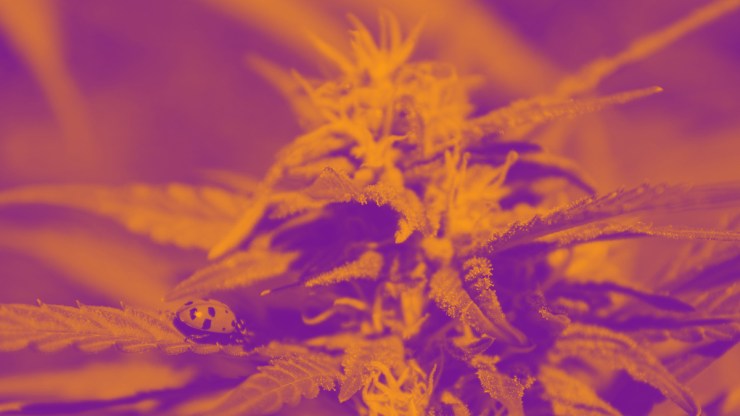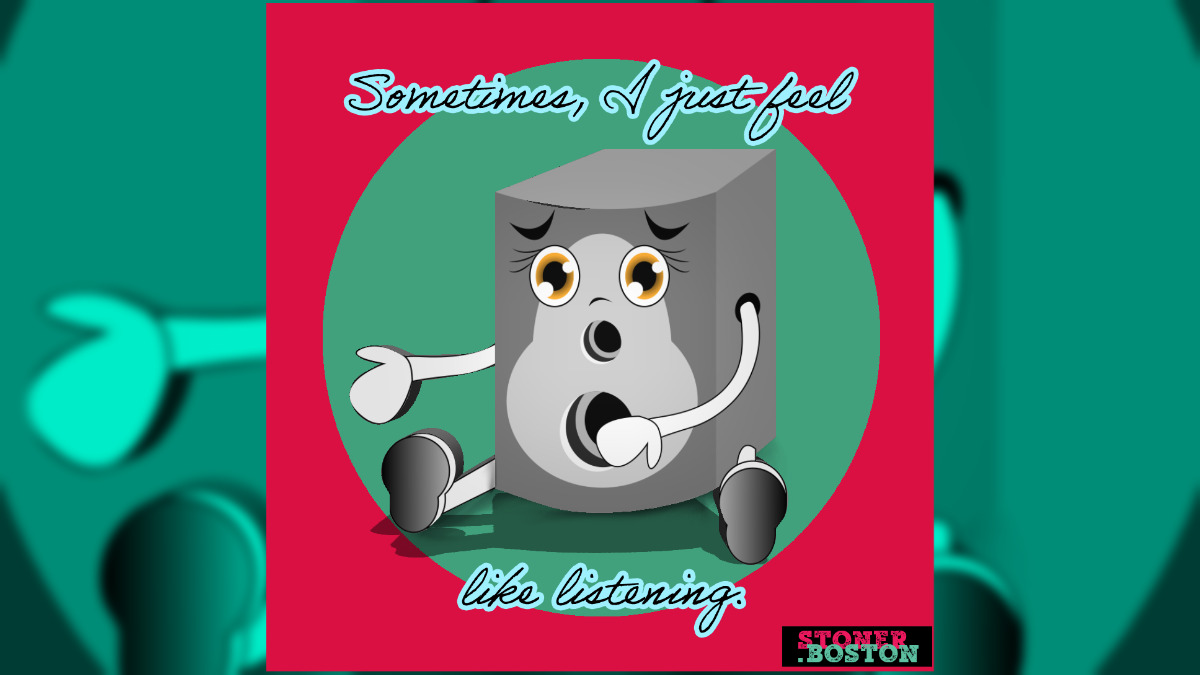Science
What is Humulene? What Makes It an Awesome Terpene?
Humans have been using humulene for thousands of years!

Humulene is a common terpene that can be found in a variety of strains of cannabis. Terpenes are chemical compounds produced inside trichomes, which are sticky resin glands located on a cannabis plant. These trichomes are made as a part of cannabis’s defense system to ward off pests. It’s in these trichomes that we find humulene, other terpenes and cannabinoids. Humulene acts as a natural insecticide, meaning that it helps marijuana plants combat insect and fungus attacks.

Humans Have Been Using Humulene for Years!
Humans have been using humulene for thousands of years! You may have even smoked some earthy buds containing it. Humulene is not only found in cannabis, but you can also find it in other spices and herbs such as black pepper, ginger, clove, sage and a variety of plants. Humulene is notable for its link to the hops found in beer. It’s responsible for giving beers their bitterness, thanks to the richness in the hop’s terpenes.

Is Humulene Common in Cannabis?
In cannabis plants, humulene is more commonly found in sativa strains, but the amounts are small compared to terpenes such as myrcene and caryophyllene (other terpenes). You can also find humulene in leaves of some plants. For years humulene was known as caryophyllene. This is because both humulene and caryophyllene on a molecular level look so similar, but they behave differently with other terpenes and cannabinoids.
In general, humulene ranks second to the majority of terpene profiles. Typically, marijuana flowers contain around 0.5% of humulene. When primary terpene concentrations reach 1% or more, they are considered significant.

Studies Show Humulene’s Medicinal Properties
A variety of studies have been done on the terpene humulene and the results are promising. As a result, humulene has been said to have anti-inflammatory properties, anti-microbial properties, anti-tumor properties, antihistamine properties, antinociceptive properties (pain perception) and more.
Anti-Inflammatory
Anti-Inflammatory Properties: This means that it could reduce swelling or inflammation. Know anyone with joint pain or muscle pain? A topical solution containing humulene and caryophyllene could reduce inflammation and help with this.

Anti-Microbial Properties
Anti-microbial Properties: Potential for killing or stopping growth of microbes. Microbes are microscopic organisms like bacteria. In a study in 2022, it was used for a periodontal dressing and the results showed that humulene was effective against both bacteria tested. Other earlier studies have been done that show these same results.

Anti-Tumor
Anti-tumor: In studies, humulene suppressed cancer cell growth by 50-69% alone and by 75%-90% when combined with beta-caryophyllene (an entourage effect). In addition, humulene’s anti-inflammatory, anti-cancer, and anti-absorption powers are amplified if combined with its cousin, beta-caryophyllene (b-caryophyllene).

Anti-Allergen
Anti-allergen: Alpha-Humulene, either orally or in aerosol, seemed to have significant anti- inflammatory properties in a murine model of allergic airway inflammation of the lungs mediated by reducing inflammation mediators, adhesion molecules, and transcription factors. So, it helped with allergies.

Humulene for Pain Management
Antinociceptive properties: In studies results have shown that humulene combined with other compounds can block pain receptors. It helps with pain perception. Imagine using a pain medication that was safer, not addictive, and didn’t have negative side effects.

Weight Loss and Humulene
Appetite suppression: The entourage effects of humulene terpenes and other chemical compounds found in cannabis may be excellent for weight loss, thanks to their appetite- suppressing properties. This is good if you are trying to find a strain that doesn’t give you the munchies! Some have said it is a good option for weight loss.

Cannabis Terpenes and the Entourage Effect
Cannabis strains that have a higher humulene content have been used for relaxation, creativity, pain management and more. It really comes down to the individual and the synergistic effect of the cannabinoids and terpenes absorbed into the body. This is known as the entourage effect. It’s a combination of phytocannabinoids, terpenes, and flavonoids all working together.
Humulene can be used by aerosol (spray), topically (on skin in an ointment or a cream) or orally. Here is a list of some strains of cannabis that have humulene:
- GSC
- Sour Diesel
- Super Lemon Haze
- Skywalker
- Headband
- Death Star
- Pink Kush

Is Humulene the Terpene For You
Whether you are trying to find bud that doesn’t give you the munchies or if you’re looking for a product to help with your arthritis, try a product that has humulene. You never know it could be a better fit for your body’s chemistry!
Cited Sources
- https://www.royalqueenseeds.com/blog-cannabis-terpenes-humulene-n684
- https://acslabcannabis.com/blog/terpenes/terpene-tuesdays-everything-you-need-to-know-about-alpha-humulene-flavor-fragrance-and-health-benefits/
- https://www.healthline.com/health/cannabis-terpenes
- https://www.tgod.ca/blogs/blog/terpenes-101-what-is-humulene
- https://www.trulieve.com/discover/blog/everything-you-need-to-know-about-the-terpene-humulene
- https://silverstemcannabis.com/news-articles/humulene-terpene-strains-effects-and-benefits
- https://www.true-blue.co/blogs/news/benefits-of-caryophyllene-humulene
- https://ethoscannabis.com/learn/terpenes-humulene/
- https://wayofleaf.com/education/what-is-humulene
- https://www.leafly.com/news/science-tech/humulene-terpene
- https://ceresmedvt.com/terpene-of-the-month-humulene/
- https://www.siranaturals.org/blog/terpenes-humulene
- https://www.verilife.com/blog/humulene
- https://www.cometobask.com/blog/terpene-of-the-month-humulene/
- https://weedmaps.com/learn/the-plant/humulene
Lifestyle
Scented Secrets: 5 Terpenes You’ve Met Outside the Cannabis World!
Terpenes are the aromatic compounds responsible for the distinctive smells of cannabis strains. Over 200 different terpenes have been identified in the cannabis plant, each contributing to the wide spectrum of flavors, aromas, and effects. By understanding terpene profiles, consumers can select strains intentionally based on desired benefits. Beyond cannabis, these same terpenes that bring nuanced fragrance to bud also exist abundantly across the natural world. For example, the terpene limonene lends a zesty lemon scent when found in citrus fruits or cannabis. Myrcene produces an earthy, musky aroma reminiscent of cloves in both mango and some cannabis strains. Pinene conveys a pine forest scent whether in conifers or in a particular cannabis cultivar. Discovering terpenes both in and out of cannabis offers a deeper appreciation for these fragrant compounds.

Terpenes are aromatic compounds found abundantly in nature, especially in plants. These complex hydrocarbons are responsible for the distinctive smells we associate with plants – from the fresh lemon zing of citrus fruits to the soothing lavender fragrance of certain flowers.
In the cannabis plant, terpenes alongside cannabinoids like THC and CBD contribute to the wide spectrum of aromas, flavors, and effects found across different strains. Terpene profiles vary widely from strain to strain resulting in unique sensory experiences.

Understanding terpenes allows us to better appreciate the nuanced palate of cannabis. It also enables more targeted consumption by choosing strains with terpene profiles that align with desired effects and benefits.
Beyond the cannabis plant, terpenes play vital roles across the plant kingdom. They help attract pollinators and repel predators in nature. Their practical applications for humans span our food, medicines, cosmetics and more.
What Exactly Are Terpenes?
Terpenes are a large, diverse class of aromatic organic compounds produced in plants as well as some insects. The term “terpenes” refers to a broad category of hydrocarbons that contain hydrogen and carbon atoms.
They are synthesized in plant cells from precursor molecules such as pyrophosphates. Terpenes exist as oily liquids and evaporate easily at standard temperature and pressure. Most terpenes share a common molecular formula: C10H16
Terpenes alongside terpenoids (their oxygenated derivatives) comprise the largest group of phytochemicals, accounting for over 50,000 distinct compounds. They are the main constituents of plant essential oils and resins.
Chemically, terpenes consist of repeating isoprene units. The number of isoprene units determines terpene classification:
- Monoterpenes – 2 isoprene units (C10H16)
- Sesquiterpenes – 3 isoprene units (C15H24)
- Diterpenes – 4 isoprene units (C20H32)
- Triterpenes – 6 isoprene units (C30H48)
- Tetraterpenes – 8 isoprene units (C40H64)

The diverse molecular structures of terpenes are responsible for an equally wide spectrum of aromas, flavors, and effects. Subtle differences in their chemical structure can produce noticeably different smells.
For example, limonene and pinene both contain 10 carbon atoms but limonene has a lemon aroma while pinene smells resinous. These distinctive aromatic compounds interact with cell receptors in our nose impacting fragrance perception.
Terpenes in Cannabis: The Entourage Effect
Over 200 different terpenes have been identified in the cannabis plant. The mix of terpenes alongside cannabinoids like THC and CBD produce the Entourage Effect – a synergistic interaction that shapes the effects and aromas of different cannabis strains.
5 common terpenes found in and outside of the cannabis world:
Myrcene
This is the most predominant terpene in cannabis. Myrcene produces an earthy, musky aroma resembling cloves. It is commonly found in fruits like mango and herbs like hops. Myrcene induces relaxing, sedative effects. It also increases cell permeability allowing other terpenes and cannabinoids to better absorb.

Pinene
As the name suggests, pinene produces a piney aroma much like a pine forest. It is found in conifers like pine trees and pine needles as well as herbs like rosemary and basil. Pinene acts as a bronchodilator potentially boosting airflow and alertness. It also enhances memory and concentration. Pinene also has various medicinal benefits.

Limonene
This terpene has a strong citrusy smell evocative of lemon zest. It is naturally abundant in citrus fruits. Limonene quickens metabolism and raises serotonin levels for improved mood. It has anti-anxiety and stress-relieving properties. As a potent antibacterial and antifungal, limonene also promotes immunity.

Caryophyllene
This is the only terpene that directly interacts with the body’s endocannabinoid system. It has a spicy, peppery scent and taste. Caryophyllene is also found in spices like black pepper and cloves. It functions as a powerful anti-inflammatory and pain-reliever. It also reduces anxiety.

Linalool
One of the most fragrant terpenes, linalool produces a floral lavender aroma. It is prevalent in lavender as well as mint. Linalool helps induce relaxation and sleep. It works as an anxiolytic agent that calms the nervous system bringing an overall sense of peace. It also boosts immunity.

The diverse terpene structures create an orchestra of flavors and effects in cannabis strains. Some strains will be more abundant in certain terpenes producing targeted benefits. For example, limonene-dominant strains can energize and thwart stress while linalool-rich strains can relax both body and mind.
Understanding terpene profiles allows consumers to identify strains better suited for desired needs whether that’s energy, focus, creativity, sleep or pain relief.
Terpenes in Everyday Life
Beyond the cannabis plant, terpenes play indispensable roles across the plant kingdom. Plants produce these aromatic compounds to attract pollinators like insects and repel predators like herbivores.

The fragrant terpene bouquets advertise nectar rewards to potential pollinators. These scented chemical cues also enable plant communication – signaling danger or summoning beneficial predators when pests are present.
For humans, terpenes have a diverse array of applications in our everyday lives. We may not know it, but terpenes impact much of what we eat, smell and use daily.
Here are some common uses of terpenes:
Fragrance Industry
The perfume industry relies heavily on terpenes to craft distinctive scents and fragrances. Limonene lends a lemon verbena zing while more woodsy terpenes like pine and cedar provide an earthy base. Floral terpenes like linalool and geraniol are used for their rosy aromas.

Companies isolate or synthetize particular terpenes to produce unique proprietary perfumes and colognes. Terpene isolates are also used to create aromatic oils and candles.
Food Industry
Terpenes contribute to the sensorial experience of eating through taste and smell. Limonene brings a citrusy flavor, pinene an herbal quality, and menthol a minty cooling sensation.
The food industry maximizes terpenes to elevate flavors. For example, terpenes called R-carvones provide spearmint flavoring. Menthol cools sensation in gum and candy. Thyme and oregano owe their robustness to terpenes like thymol.

Terpenes are Generally Recognized as Safe (GRAS) additives by the FDA to enhance taste, aroma, and preservation. They Terpene isolates are also used to create aromatic oils and candles
Health and Medicine
Some terpenes exhibit therapeutic properties from anti-inflammatory to antimicrobial. The phytochemical potential of terpenes is now being researched for health applications.

For example, limonene has gastroprotective effects useful in managing acid reflux and heartburn. Pinene helps clear airways – it is even being investigated as a natural bronchodilator. Linalool and caryophyllene have anxiolytic properties that ease stress and anxiety.
Terpenes feature prominently in aromatherapy. Inhaling lavender oil high in linalool targets mood disorders. Terpenes like borneol are also used in traditional Chinese medicine. As more research emerges, terpene therapies may grow in popularity.
Cleaning and Cosmetics
Citrus-scented cleaners leverage limonene for its clean, freshening aroma and antimicrobial potency. Linalool and eucalyptol (minty terpene) are used in hygiene products for their pleasant scents and germ-fighting abilities.

Some terpenes even dissolve grease and oil. D-limonene (citrus peel extract) is often listed as an active ingredient in all-purpose cleaners and degreasers. It breaks up grime and grease naturally without synthetic chemicals.
Cosmetics also capitalize on terpenes. Linalool offers a delicate floral scent to lotions. Limonene and pinene infuse an uplifting aroma to products. Menthol provides cooling sensation. Cosmetics leverage the fragrance, flavor and bioactive properties of terpenes.
Pest Control
Given their natural bioactivity, terpenes have a long history of use as insecticides and pest repellents. Citronella oil high in citronellol wards off mosquitoes. Other terpenes work as natural solutions against fleas, moths, roaches and plant diseases.

With increased pest resistance to synthetic pesticides, terpene-based insecticides and repellents offer safer and eco-friendly alternatives. They biodegrade rapidly avoiding environmental accumulation.
Industrial Applications Some terpenes work as green solvents for their ability to dissolve substances. D-limonene safely dissolves oils, waxes, greases and resins. It replaces harsh solvents like toluene as an ecologically-friendly option.
The adhesive industry uses terpene derivatives in formulas for pressure-sensitive tapes, labels, laminates and more. Terpenes can also wet surfaces helping adhesive spread and penetrate better.
This is just a sampling of the many practical uses and applications of terpenes in our everyday lives. Their multi-sensory properties coupled with ecological advantages make terpenes highly versatile across many industries from food to medicine and beyond.
The Abundance of Terpenes in Nature
Terpenes represent the largest and most widespread class of phytochemicals in the plant kingdom. They are produced profusely as main constituents of essential oils and resins.
Beyond aroma and flavor, terpenes play vital ecological roles for plant survival. As potent biochemicals, terpenes help plants:

- Attract pollinators
- Deter herbivores
- Repel or kill pests/pathogens
- Mediate symbiotic relationships.
Plants utilize terpenes as chemical messengers in communication, defense and reproduction. Some terpenes are toxic to competing plants inhibiting growth (allelopathy). Others alter soil chemistry to gain a competitive edge.
Given their ecological importance, terpenes are ubiquitous across the plant kingdom. They are found in abundance in:
Fruits – Most fruits contain high concentrations of terpenes that give them distinct aromas, flavors and colors. Citrus fruits are abundant in limonene while muskmelon has characteristic muscone (musk terpene). Mangoes brim with myrcene conveying lush, fruity notes. Even the characteristic flavors of apples (pinene) and grapes (linalool) arise from terpenes.
Herbs and Spices – Pungent herbs and spices owe their fragrance and taste to terpenes. Black pepper teems with caryophyllene while eucalyptol brings the cool sensation of mint. Thyme and oregano get their robust herbal quality from thymol and carvacrol terpenes. Ginger gets its zing from shogaols and zingerone. The piquant aroma of cloves comes from eugenol.
Flowers and Plants – Flowers across various species produce terpenes to attract pollinators. Lavender contains bountiful linalool bringing its soothing floral aroma. Similarly, geraniol and nerol terpenes impart the sweet rose fragrance to roses. Conifers are loaded with pinene giving forests their pine scent. Even cannabis showcases over 140 different terpenes.
Insects and Animals – Terpenes are not exclusive to the plant kingdom. Insects like swallowtail butterflies biosynthesize terpenes for defense. Their caterpillars absorb terpenes from host plants making themselves toxic or distasteful to predators. Some terpenoids found in truffles and cannabis may originate from microbial production.
In short, terpenes are integral natural compounds found across the biological world. Their production spans the plant, insect and microbial domains. Next time you catch a whiff of pine, lavender or cloves, that’s the sensory power of terpenes!
The Entourage Effect: How Terpenes Interact with Other Compounds
In nature, terpenes rarely exist in isolation. More often, a mix of terpenes alongside other phytochemicals creates synergistic interactions that shape plant characteristics.
This biochemical “entourage effect” underlies the aroma, taste, color and medicinal benefits of plants.

Some key entourage effects of terpenes include:
Terpenes + Flavonoids
Flavonoids are color pigments in plants. Their interaction with terpenes influences flower color. Blue flowers owe their hue to anthocyanin flavonoids. Coexisting terpenes stabilize and modify the anthocyanin molecules producing variegated shades.
Terpenes + Cannabinoids
In cannabis, limonene amplifies absorption of THC and CBD through the blood-brain barrier. Myrcene also increases cell permeability allowing more cannabinoids to reach receptors. The terpene caryophyllene even binds to CB2 receptors directly making it psychoactive.
Terpenes + Curcuminoids
Curcumin, the main bioactive in turmeric, is fat soluble. Terpenes like d-limonene help curcumin dissolve and become more bioavailable to the body. This synergy enhances the anti-inflammatory benefits.
As these examples show, terpenes modulate bioactivity of other plant molecules from pigments to cannabinoids. The overall effect is amplified and balanced. Isolating single molecules misses these entourage benefits.
How Are Terpenes Created in Plants?
Terpenes are biosynthesized from basic molecular building blocks within plant cells. The primary precursor molecules for terpene synthesis include:

Acetyl Co-A – Derived from glycolysis, this coenzyme donates 2-carbon units
IPP (Isopentenyl pyrophosphate) – Formed from acetyl Co-A, IPP is a 5-carbon precursor
DMAPP (Dimethylallyl pyrophosphate) – Rearranged from IPP, DMAPP contains 5 carbons
IPP and DMAPP combine in a head-to-tail configuration to form monoterpenes, the C10 precursors to all terpenes.
This basic reaction is catalyzed by terpene synthase enzymes. Through alkylation, cyclization and oxidation steps, IPP and DMAPP are converted into the vast diversity of terpene structures.
For example, limonene synthase rearranges the geranyl pyrophosphate precursor into limonene. Further enzymatic steps add functional groups producing terpenoid derivatives.
The genes encoding these terpene synthesis enzymes have been widely studied and engineered in microbes for enhanced terpene production.
Certain growing conditions can also boost terpene content. Slow-dried cannabis often has higher terpene levels than rapidly dried cannabis. Stressors like high UV light and low nutrients may also stimulate terpene production.
Health Benefits of Key Terpenes
While research is still emerging, some terpenes appear to offer therapeutic properties and health benefits. Here are a few well-studied terpenes with promising bioactivity:
Limonene
This abundant terpene has well-researched anticancer effects. It induces cancer cell death and restricts tumor growth. Limonene’s antioxidant action also promotes heart health. As a potent antibacterial and antifungal, limonene boosts immunity and battles pathogens. It relieves heartburn and gastroesophageal reflux when taken orally.
Pinene
Used medicinally since ancient times, pinene exhibits potent antimicrobial effects against a broad range of bacteria, fungi and viruses. It acts as an expectorant to help clear airways. Pinene’s ability to cross the blood-brain barrier also makes it neuroprotective.
Caryophyllene
This is the only terpene known to directly activate endocannabinoid receptors. It selectively binds to CB2 receptors producing anti-inflammatory and analgesic effects similar to cannabinoids. Caryophyllene holds promise for pain relief and autoimmune conditions.
Linalool
With its calming floral aroma, linalool is a proven anxiolytic that alleviates anxiety, stress and depression. It acts on GABA receptors and serotonin pathways bringing relaxation and improved mood. Linalool also completely inhibits growth of certain fungi and bacteria.
Clearly, terpenes are more than just aromatic compounds. From anxiety to pain, infection to inflammation, targeted terpenes may offer therapeutic benefits in the future. However, more rigorous research in humans is still needed.
Let’s Wrap it Up!
Terpenes constitute the largest class of phytochemicals performing vital roles across the plant kingdom. They contribute to plant communication, defense and reproduction. For humans, terpenes impart tantalizing aromas and flavors that make foods more palatable and even bioactive.

In cannabis, terpenes alongside cannabinoids create the Entourage Effect that shapes strain-specific characteristics. Analyzing terpene profiles enables more intentional consumption based on desired effects and benefits.
Beyond cannabis, terpenes have diverse applications across our everyday lives. They are ubiquitous in cleaning and cosmetic products, food and beverage, medicine and more. Nature’s biochemical factory has crafted over 50,000 terpene structures contributing sensory richness and ecological intimacy to the world.
Cartoons
Speaker Says, “I Just Feel Like Listening” Cartoon.
Tuning up your listening skills and public speaking chops can strengthen relationships, spread ideas, boost your career, and more. This article explores the complementary benefits of being an excellent listener and articulate speaker.

The Art of Listening Well and Speaking Smoothly: For a Speaker and a Listener
Listening and speaking are two of the most fundamental communication skills, yet they can be quite tricky to master. Whether you’re looking to have deeper connections, excel at work, or just become an overall better communicator, improving these skills is crucial. In this blog post, we’ll explore some perks of being an excellent listener and speaker, with a special herbal twist at the end. Let’s dive in!
Four Fantastic Benefits of Being a Great Listener
Listening is a lost art nowadays. With so many distractions and things competing for our attention, truly listening to someone has become a rare gift. Here are four great reasons you should sharpen your listening abilities:
Listeners:
- Listeners Build Stronger Relationships
When you listen attentively to someone, you make them feel truly seen and heard. This fosters a deeper bond and sense of trust between you. People open up more to good listeners, so you’ll get to know them on a more intimate level. - Listeners Often Gain Valuable Knowledge
You can learn a lot from tuning in to others. Listening closely allows you to pick up useful information, hear different perspectives, and gain insights you may have otherwise missed. Keep your ears open and you never know what gems you might uncover. - Listeners Are Better Leaders
Strong leaders are excellent listeners. They pay attention to their team’s needs, concerns, and ideas. This helps them make more informed decisions and unite people behind a shared vision. Good listening abilities will help boost your leadership skills. - Listeners Avoid Misunderstandings
When you don’t listen closely, it’s easy for miscommunications to happen. You may respond inappropriately or make incorrect assumptions. Careful listening helps you better understand messages and pick up on nuances, reducing mix-ups.
Four Fabulous Perks of Being an Amazing Speaker
Speaking clearly and confidently is a skill that will serve you well throughout life. Here are four great benefits of being a fantastic communicator:
Speakers:
- Speakers Can Inspire and Motivate
Great speakers have a way with words that can spur others into action. They can incentivize people to work towards shared goals and rally them behind a cause. Hone your speaking skills to motivate and lift up those around you. - Speakers Spread Ideas Effectively
Want to share your ideas and have them stick? Strong communication is key. Savvy speakers know how to grab attention, explain concepts, and make complex information digestible. Sharpen your skills to spread ideas further. - Speakers Gain Influence
Those who can speak eloquently tend to gain authority and sway. People look to public speaking skills as a sign of confidence and leadership. Work on your delivery to boost your powers of persuasion. - Speakers Advance their Careers
Being an articulate, assured speaker is a tremendous asset in the workplace. It helps with everything from acing interviews to commanding the conference room. Invest time into improving your speaking abilities to reach new heights.
Bringing it All Together: The Dynamic Duo

As you can see, strong listening and speaking skills truly complement each other. By sharpening these tools, you’ll communicate better and forge deeper connections. You’ll gain knowledge, spread ideas, inspire change and advance professionally.
It does take commitment and practice to hone these abilities, but the payoff is immense. Try active listening techniques like avoiding distractions, asking thoughtful questions and summarizing key points. For speaking, work on your clarity, vocal variety, body language and ability to grab interest upfront.
With time and effort, you can master the art of listening well and speaking smoothly. And hey, if public speaking makes you a bit nervous, don’t worry – that’s very common! Try positive self-talk, deep breathing and visualization techniques to calm your nerves. Picture yourself succeeding. With practice, the jitters will ease and you’ll be communicating skillfully in front of crowds. Hone these dual arts, and you’ll forge deeper connections and take your communication skills to new heights!
Misc.
Cosmic Revelations: A Journey into Space’s Mysteries
Space is silent. Wouldn’t you love a break from the constant buzz of everyday life? Space offers just that! The complete silence of space is an astounding concept, as it’s quite different from our noise-filled environment on Earth. This is primarily due to the absence of a medium, such as air, in the vacuum of space through which sound waves can travel.

Hello, all you stargazers and curious minds! Ready to take a deep-dive into the great unknown? Buckle up, as we’re about to embark on a cosmic journey exploring some astonishing facts about our universe. We guarantee this is an adventure that’s going to be truly out-of-this-world!
The Whispering Cosmos: Space’s Sound of Silence

Wouldn’t you love a break from the constant buzz of everyday life? Space offers just that!
Space is Silent:
The complete silence of space is an astounding concept, as it’s quite different from our noise-filled environment on Earth. This is primarily due to the absence of a medium, such as air, in the vacuum of space through which sound waves can travel. Sound, as we understand it, is created by the vibration of particles in a medium. In space, there are exceedingly few particles, and they are spread far apart, so sound waves cannot travel. Even in the event of a colossal cosmic explosion, there would be no sound to hear. The images we see from space telescopes are therefore silent, which is a thought-provoking contrast to the chaotic events we’re witnessing.
The Sun: Earth’s Mighty, Oversized Neighbor in Space

The Sun is over 300,000 times bigger than the Earth:
When we say the Sun is bigger than the Earth, we’re talking about its volume, which is a measure of how much space it occupies. The Sun is so large that you could fit over 1 million Earths inside it. That’s because its diameter is about 109 times that of Earth, and volume increases with the cube of the diameter. Furthermore, the Sun’s mass is about 300,000 times that of Earth, contributing significantly to its powerful gravitational force, which keeps the planets of our solar system, including Earth, in their respective orbits. The Sun’s immense size and mass enable it to hold a vast amount of fuel, allowing it to shine brilliantly and support life on Earth.
Halley’s Comet: The Celestial Nomad with a 75-Year Itinerary

Halley’s Comet, perhaps the most famous of all comets, is notable for its relatively short orbital period of around 75 to 76 years. This means that it returns to the inner parts of our solar system (where Earth is located) approximately every 75 years. Halley’s Comet has been documented for over 2000 years and its repeated returns have allowed scientists to study it in detail. Its last appearance was in 1986, and it’s expected to return in 2061. Every time Halley’s Comet swings by, it puts on a dazzling show, leaving a trail of debris that often results in meteor showers on Earth.
The Moon: The First Cosmic Pit-Stop for Humanity in Space

The Moon holds a significant place in human history as it was the first celestial body humans visited outside of Earth. This historic event took place on July 20, 1969, during the Apollo 11 mission by NASA. Astronauts Neil Armstrong and Buzz Aldrin made a safe landing on the Moon’s surface, marking a significant milestone in human exploration. Armstrong’s first step onto the lunar surface and his famous statement, “That’s one small step for man, one giant leap for mankind,” symbolized this incredible achievement. The moon landings represented the culmination of the space race and have fueled our interest in space exploration ever since.
Neutron Stars: The Galactic Whirling Dervishes

Neutron stars are remnants of massive stars that have undergone a supernova explosion. Once the outer layers of the star are blown away, the core collapses under gravity, resulting in a highly compact object primarily composed of neutrons. These neutron stars can spin incredibly rapidly due to the conservation of angular momentum. Before the explosion, the original star was spinning slowly, but as it shrinks in size during the supernova explosion, the rotation speed increases significantly, similar to a figure skater who spins faster when they pull in their arms. This can result in a neutron star spinning multiple times per second, becoming a pulsar if its magnetic poles emit beams of radiation that sweep past Earth.
Mercury and Venus: The ‘Moonless’ Duo of Our Solar System in Space

In the planetary lineup of our solar system, Mercury and Venus are the only ones without moons.
One leading hypothesis for this is their proximity to the Sun. The gravitational pull of the Sun could prevent these planets from acquiring and holding onto moons of their own. For a moon to orbit a planet, the planet’s gravity needs to be the dominant influence on the moon. But since Mercury and Venus are so close to the Sun, the Sun’s much stronger gravity would likely disrupt any moon’s potential orbit around these planets. In the case of Venus, another possibility is that it might have had a moon in its early history, which could have collided with another body or been destroyed by tidal forces. Despite extensive exploration of both planets, no evidence of current or past moons has been found to date.
Space- Endless Fascination:
So, there you have it! Our cosmic neighborhood is as captivating and diverse as it gets. Each silent corner, colossal star, punctual comet, human footprint, spinning neutron star, and moonless planet tell us a tale about the universe’s grandeur. As we marvel at the night sky, remember that we’re part of an ongoing cosmic saga, forever exploring, learning, and reaching for the stars. And remember, in this vast cosmic theatre, we’ve only seen the opening act! Join us again as we journey further into the mysteries of the cosmos.
-

 Cannabis Industry3 years ago
Cannabis Industry3 years agoCannabis Brands In Massachusetts, Here’s an Unbiased Review
-

 Health3 years ago
Health3 years ago10 Positive Psychology Ideas to Improve Your Mental Well-Being
-

 Misc.2 years ago
Misc.2 years agoCosmic Revelations: A Journey into Space’s Mysteries
-

 Health3 years ago
Health3 years agoAlcohol Vs Cannabis: The Ultimate Showdown
-

 Science3 years ago
Science3 years agoMyrcene, What Is This Cannabis Terpene And What Does It Do?
-

 Interviews3 years ago
Interviews3 years agoAdam Warren, aka AdamOnEarth Interview with StonerBoston
-

 Lifestyle3 years ago
Lifestyle3 years agoCannabis is Amazing Medicine Helping for Over 5,000 Years
-

 Cannabis Industry2 years ago
Cannabis Industry2 years agoThe Cannabis Framework Project Will Transform the Industry











Pingback: Cannabis Trichomes and Maturity - Stoner Boston Massachusetts